








Collapsible content
You can play BankIt! with 2-4 players, ages 8 and up.
BankIt! is good for developing Money Management Skills, as players exchange money and make change.
BankIt! also helps with Decision Making as players choose when to spend wisely or save.
This game is played in the box.
Lift the gameboard out of the box, remove all the pieces underneath and replace the gameboard.
Have each player choose a shoe pawn and a money clip of the same color. Place the money clip on the left side Bank icon on your bank side of the box.
Assemble the shopping mall in the center of the board by slotting in the corners together. Make sure the storefronts face the matching card icons on the board.
Sort out and shuffle each of the six decks of cards separately. Place the four store card decks face-down on their matching icons on the gameboard, then turn the top card face-up on each deck. Place the BankIt! Cards and Community Giving Cards to the side of the board where everyone can reach them.
This game uses US coin denomination. Choose a player to be the banker. The banker can use the lid of the box as their bank. Give the banker all the coins. The banker will then give each player a total of $2.00: one $1.00 coin and four 25¢ pieces.
Roll the die to determine who goes first. The first person to roll a dollar symbol starts the game. Choose any BankIt! space to place your pawn on. Next, each player in clockwise order should place their pawn on any green BankIt! space. No cards are collected at this time.
Be the first player to save $10.00 in the bank, purchase one item from each of the four stores, donate to charity once and then pass the special bike/interest space on the gameboard to purchase your new bicycle and win the game.
On your turn, roll the die, and move your pawn clockwise around the gameboard, as many spaces as the number shows. If you roll a dollar sign, you may choose how many spaces to move, up to 4 spaces.
After moving your pawn, follow the directions on the space you landed on.
The spaces you land on will allow or require you to perform a variety of actions such as purchasing items, riding the bus, and earning or losing money. Refer to the back page of the rules book for a quick reference guide.
As soon as a player has $10 in their bank account, has donated to a charity and has purchased something from each store, the only thing left to do is reach or pass the BIKE space to win!
At the beginning of the game, you were given a Money Clip that was placed on the left side Bank icon on your side of the box. You can deposit money into your bank account only when you land on the BANK space. Each field on your bank account represents fifty cents.
When you deposit money, slide your money clip to the right. The more money you have in your account, the more interest you will earn when you land on the INTEREST space. Don’t forget to move your money clip each time you deposit money or earn interest.
Once money has been deposited in the bank, it cannot be removed during the game.
The Shop Spaces: The shop spaces on the gameboard are the stores you can shop in; Sports Palace, Toy Mart, Books & Music Barn, and the Pizza Castle. The card deck in front of each shop shows the current item for sale and the price. When you land on a SHOP Space you may choose to buy or pass on the currently shown item.
If you choose to buy the item and have enough money, simply drop the right amount of money into the open space at the top of the shopping mall and place the card in front of you. If you need change, ask the banker for it first. Next, turn over the top card of the shop you bought from to reveal the next item for sale. Your turn is over.
If you decide not to buy the item, either because you already have an item from that store or because you have too little money, place the card showing the item face down at the bottom of the card deck. Then, turn over the top card and your turn ends.
SALE Spaces: All the stores are holding a sale and you are the lucky one to get the deal. Choose any of the four available items shown on the cards in front of the shops. You can buy that item for fifty cents less than the price shown.
Drop your money into the open space at the top of the shopping mall. Then, turn over the next card on the stack. This ends your turn.
Community Giving Space: Giving back to your community is important. When you land on this purple space, you may donate $1.00 to the charity of your choice. If you choose to donate, place the $1.00 into the open space at the top of the shopping mall. You will need to donate to at least one charity to win the game.
BankIt! Space: When you land on a green BankIt! space, draw the top card from the BankIt! deck and read it aloud to everyone. The banker will then give you the amount stated on the card. Return the card to the bottom of the deck after you have collected your earnings. Your turn is now over.
Do I have it? Space: There are two of these orange spaces on the board. Each will cost you money. If you land on the space where you have broken a window or have bought a birthday present for a friend, place fifty cents on the “ground” of the gameboard so everyone can see it. If you have less than 50¢, then pay what you have. If you have no money, you do not pay anything.
Found Money Space: Land on this orange space and it may be your lucky day. If there is any money “on the ground” when you land on this space, you collect all the money, from both intersections, on the board. However, if there is no money on the ground, pay 50¢ on either of the intersections on the board.
Bank Spaces: The blue BANK space is where you can deposit money in your bank account. Each time you deposit money, you pay the bank and slide your money clip one space for each fifty cents you deposit. Once you have filled all four rows, you will have saved the needed $10.00! Remember, you’re not allowed to pull money back out of the bank, so be careful how much you decide to save!
Interest Spaces: The blue Interest space allows you to earn more by being rewarded for saving money. Earning money by saving is called interest. The more money you have in the bank, the more interest you will earn when you land on this space. When ANY player lands on an Interest space, the bank pays interest to every player.
The amount of money each player earns is determined by how much money they have in the bank. (Refer to the rules.)
When a player has less than $10.00 in the bank, interest is added directly to their bank account and they will move their Money clip. After a player has reached $10.00 in their bank account, Interest spaces pay out coins to players.
Bus Stop Space: Land on this yellow space and you can get ahead by taking the bus! To take the bus, simply slip 70¢ into the open space at the top of the shopping mall. After paying your fare, immediately go to any space on the board with a yellow Bus Stop sign and follow the instructions for that space.
When you have $10.00 in the bank, have purchased something in all four stores, and donated to at least one charity, and then land on OR pass the special bike/interest space, congratulations! You can now purchase a bike AND you have won the game!
Learn about financial responsibility and laugh all the way to the bank with BankIt!

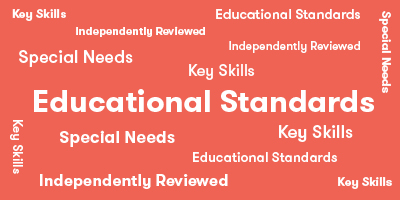
Core Standard*: Language, Math, Social Studies
Language
- Reading
- Informational Text
- Range of Reading & Level of Text Complexity
Grade Levels 2nd, 3rd
Math
- Measurement & Data
- Work with Time & MoneyGrade Level 2nd
- Number & Operations in Base 10
- Use place value understanding & properties of operations to perform multi-digit arithmeticGrade Level 4th
- Understand the place value systemGrade Level 5th
- Perform operations with multi-digit whole numbers and with decimals to hundredthsGrade Level 5th
- Mathematical Practice
- Make sense of problems and persevere in solving them.Grade Levels 3rd, 4th
- Reason abstractly and quantitatively.Grade Levels 3rd, 4th
- Use appropriate tools strategically.Grade Levels 3rd, 4th
- Look for and make use of structure.Grade Levels 3rd, 4th
Social Studies
- Economics - Expectation
- Understands & analyzes the costs & benefits of people’s decisions to move and relocate to meet their needs and wants.Grade Level 4th

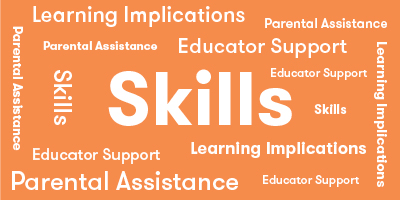
Determine
What Does Child Do To Use Skill In The Game?
Players have to determine how much money they have and how to allocate it to various expenditures or savings.
How Parents Can Assist Learning
To help children develop more thoughtful decision-making, parents can ask them to justify before they make a decision. Ask questions like, "How will that decision help you reach your goal?"
Learning Implications and Educator Support
This game helps children learn to set priorities and to allocate money across variables. Educators can ask children to justify their thinking, before they make a decision. Ask questions like, "How will that decision help you reach your goal?"
Compare
What Does Child Do To Use Skill In The Game?
Players compare the amount of money they have (not in the bank) with the costs of various items.
How Parents Can Assist Learning
In order help children to reduce impulsivity, parents can encourage children to talk about different possible results based on varying choices.
Learning Implications and Educator Support
Bank It corresponds to math curricula. To help encourage mathematical thinking, educators can ask questions like, "How much money do you have now? How much does the item cost? How much will you have left?" This line of questions also helps children think carefully to reduce impulsive thinking.
Remember
What Does Child Do To Use Skill In The Game?
Players need to remember the rules of the game. For example, they need to save $10, buy something from each store and give to charity. They also need to remember what all of the signs on the board mean and the actions associated with them.
How Parents Can Assist Learning
Instead of reminding children of the rules, adults can ask children to explain what is supposed to happen on a given spot on the board.
Learning Implications and Educator Support
Various forms of memory, including short-term explicit and declarative as well as long-term procedural memory, are supported and developed by this game. Educators can help children by reminding them to focus on their goals. If the children are having difficulty with adding or subtracting, remind them of mathematical formulas and procedures.
Predict
What Does Child Do To Use Skill In The Game?
Players can predict when they will have enough money to buy the bicycle by seeing how quickly they are earning money in the bank.
How Parents Can Assist Learning
Parents can encourage children to think ahead. Have them look at the cost of items on the card, so they can anticipate how much money they need for various items.
Learning Implications and Educator Support
Being able to hypothesize risk and reward consequences of actions helps children develop strategic thinking. Educators can encourage children to think ahead by having them look at the cost of items on the card, so they can anticipate how much money they need for various items.
Plan
What Does Child Do To Use Skill In The Game?
Players need to plan for both spending and saving. In addition, they need to plan to give to charity.
How Parents Can Assist Learning
Parents can remind children that they need to think about all spending, saving and giving. They cannot win if they do too much of one and ignore the others. Have them reflect on what they have done with their allowance or gift money in the past. Did they make good decisions?
Learning Implications and Educator Support
This game involves significant planning in order for child to balance spending, saving and giving. Because the child has the option to move a different amount of spaces, they will need to think ahead in order to determine which space to move to on her or his current turn. Educators can ask children to justify their thinking, before they make a decision. Ask questions like, "How will that decision help you reach your goal?"
Experiment
What Does Child Do To Use Skill In The Game?
Players experiment with different approaches to decision making. For example, when they purchase an expensive item, they learn that their money is soon gone.
How Parents Can Assist Learning
Parents can help children change perspective, which is a essential experimental skill that supports creative problem solving. To do this, comment on what seems to be working for you. For example, "When I put money in the bank I got interest, so now I have even more money in the bank!" or, "That item is too expensive, I think I will wait." Commenting on a strategy provides clues for the child to consider on his or her turn.
Learning Implications and Educator Support
Changing perspective is a essential experimental skill that supports creative problem solving. Educators can help children to change perspective by asking "what would happen if ...?" questions. For example, "What would happen if you put all your money in the bank!"
Practice
What Does Child Do To Use Skill In The Game?
Players practice addition and subtraction throughout the game. They also practice decision making.
How Parents Can Assist Learning
Parents can encourage children to practice adding and subtracting in order to master elements of the game.
Learning Implications and Educator Support
This game is good for applying simple addition and subtration, and practicing money handling, saving, spending and chartible giving skills. Educators can ask children to explain how they arrived at a particular sum in order to determine if the child is using appropriate procedures.
Solve
What Does Child Do To Use Skill In The Game?
Players need to do addition and subtraction of money throughout the game. They also solve simple equations. " I need $10.00. I have $8.50, so I need $1.50." When Players are giving an option of how many spaces to move, they need to draw conclusions about what will be the best result. They also draw conclusions about how to spend and save at each turn.
How Parents Can Assist Learning
Parents should ask questions about amounts to encourage practice with solving math problems. For example, "If you buy that item for $1.75, will you have enough left to contribute to your charity?" Parents can remind children that they need to think about all spending, saving and giving. They cannot win if they do too much of one and ignore the others.
Learning Implications and Educator Support
Educators should ask questions about amounts to encourage practice with solving math problems. For example, "If you buy that item for $1.75, will you have enough left to contribute to your charity?" Additionally, if children produce incorrect mathematical results, educators can work with child to break down the problem into steps using correct procedures.
Review
What Does Child Do To Use Skill In The Game?
How Parents Can Assist Learning
Learning Implications and Educator Support
Review
What Does Child Do To Use Skill In The Game?
Players may review if encouraged. See Implications for Learning and Adult Support.
How Parents Can Assist Learning
Parents can ask children to think about their decisions and talk about whether they made good choices.
Learning Implications and Educator Support
Educators can ask children to think about their decisions and talk about whether they made good choices. Also, educators can discuss different ways children could have structured their saving and spending.
Demonstrate
What Does Child Do To Use Skill In The Game?
Players demonstrate their ability to plan and execute a strategy.
How Parents Can Assist Learning
Ask children to explain their reasoning in reaching a decision about what to do on a given turn.
Learning Implications and Educator Support
Ask children to explain their reasoning in reaching a decision about what to do on a given turn. Also, ask them to demostrate their addition and subtraction processes.
Imagine
What Does Child Do To Use Skill In The Game?
Players can imagine doing the same activities in their own lives.
How Parents Can Assist Learning
Parent can encourage children to think about their own spending and saving. See if they can transfer their learning to their daily lives. For example, talk about something that the child may want to purchase and how they could earn and save money. What charity would they like to give to?
Learning Implications and Educator Support
Educators can encourage children to think about something that would be helpful to buy for the classroom and/or a charity they could give to. Then, brainstorm ways to earn and save the money.
*Data compiled from CCSSI ELA Standards, WA Science Standards, and Washington Social Studies Standards

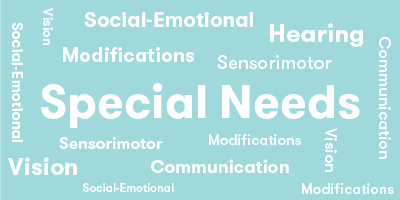
Cognitive
Suggestions for How to Modify Play Experience
Children who have cognitive delays may not be able to play this game independently, but they can learn money value with an adult's support. If possible, let the child with special needs use real money (nickels, dimes, quarters and dollars), as this will teach the child to recognize the real paper and coin values. As the play money is played by other players in the game, show the child the real money equivalent. Eventually the child will understand the relationship between the two and the play money can be used in the game. For each purchase and expenditure have the child count out the real money needed.
Children with cognitive challenges may not be able to count by 5's, 10's etc. This is an important skill to be able to play the game independently. The game may help them understand money concepts if adults set up the game with visual cues. On a piece of paper place two play nickels and next to that place a play dime. Under these write 5 + 5 = 10. Next to these place two real nickels and a dime. Under these write 5 + 5 = 10. Do the same process on the paper for two dimes and a nickel = quarter; five nickels = quarter; 10 dimes = one dollar; and four quarters = one dollar. Have play money and real money represent for each. Then as the game is played, the adult can help the child refer to this paper to figure out how to count out his money. The child will practice looking at both and counting by various amounts.
Communication
Suggestions for How to Modify Play Experience
Give children conversational practice by talking about what they are buying or why they are saving. If children don't answer a "why" question, ask a choice question ("Do you already know how to play tennis, so you are buying a racket; or are you going to learn how to play?
Ask children to count out their money out loud. This enables others to comment or correct them if they make a mistake.
money out loud. This enables others to comment or correct them if they make a mistake. Ask questions and make comments to encourage conversation. Examples: I hope I land on the SALE square. Where do you want to land? I don't want a calendar, I have one on my phone.
Sensorimotor
Suggestions for How to Modify Play Experience
The small pieces may be difficult for children with fine motor problems to manipulate. The adult or a peer can hold cards or coins in their palm or even between their fingers to make it easier for the child to pick up. For discarding, another person can pick up the pile and allow the child to place the card down. (This task requires using two hands together, which may be difficult for children with motor planning concerns or cerebral palsy.
Move the shopping center in the middles to the side of the board. Children can see the full board better and can move around it more easily with their token.
Social Emotional/Behavioral
Suggestions for How to Modify Play Experience
Make it a practice to have a celebration every time someone makes interest in the bank. "Hooray, Hooray! Good for you! Money in the bank and interest too! This little bit of silliness makes children feel important and that they made a good decision, as well as building empathy for others when the celebrate another player's success.
Vision
Suggestions for How to Modify Play Experience
The complexity of the playing board makes it difficult for vision impaired children to see and understand. The other players can help by reading the signs on the board as the child move their token. "For example, you are passing BANK, BANK IT!, SALE! Now you are on the red book store. Draw a red card." The child can then use a magnifier to read the card or have someone read it.
Hearing
Suggestions for How to Modify Play Experience
No modifications required.
*Data compiled from CCSSI ELA Standards, WA Science Standards, and Washington Social Studies Standards

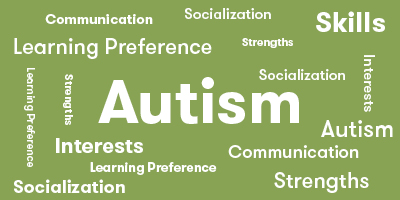
Autism Special Considerations
Appears to ignore other's communication and/or has difficulty giving eye contact to a communication partner
Is This Game Appropriate for Child with Characteristic? Yes
Can Child with Characteristic Play Game w/o Modification? Yes
Strategies for Developing Compensatory Skills:
Look at the game instead of each other Person talking holds the object being talked about near their mouth to bring the child's attention to the object. This also shows the child how the words about the object are produced. For example, hold a Charity card up by your mouth, and say what is written on the card. Use unusual or exaggerated inflection to begin a communication about the game. This attracts the child's attention.
Has difficulty understanding complex verbal directions
Is This Game Appropriate for Child with Characteristic? Yes
Can Child with Characteristic Play Game w/o Modification? No
Strategies for Developing Compensatory Skills:
Break down directions into small steps. Don't go through all the directions at once. Combine short verbal instructions with visual and physical examples of each step. Use photos to illustrate what needs to be done. These can be taken ahead of time. The combination of pictures and actions reinforces learning the steps. Also, take pictures during the game for use in later discussions about the game and what happened. Check for comprehension by asking the child to show you what to do next. Let children read the directions as they are explained. Visualizing the words is often a stronger learning method for children with autism.
Uses vocabulary inaccurately or demonstrates echolalia (repeating another's speech)
Is This Game Appropriate for Child with Characteristic? Yes
Can Child with Characteristic Play Game w/o Modification? No
Strategies for Developing Compensatory Skills:
Respond to immediate echolalia (repeating what was just said) by rephrasing the child's response into a correct format, so the child can hear and repeat that phrase. For example, assume you are playing with a child named Andy and you say, "Your turn," and Andy repeats, "Your turn." You can say, "It's Andy's turn. You say, my turn." This allows the child to hear and repeat the correct response. Eventually, the child will pick up the pattern of response. Delayed echolalia (repetition of previously heard comments) may have a hidden meaning or association. Look for connection in the phrase used to the current situation. For example, the child says, "After these messages we'll be right back!" Think what the repeated phrase is associated with for the child. Try to interpret what is meant and rephrase it for the child. For example, you might respond by saying, "It sounds like you want a break for a few minutes. Is that what you mean? You can tell me, 'I need a break.'"
Gets stuck repeating a verbal topic or physical actions and/or has difficulty attending to others' actions or topic.
Is This Game Appropriate for Child with Characteristic? Yes
Can Child with Characteristic Play Game w/o Modification? No
Strategies for Developing Compensatory Skills:
Incorporate a preferred topic into the game to increase motivation. For example, if the child is fixated on a particular character, like a favorite super hero, ask what the character would do if they were playing? Practice phrases for commenting on others' play actions. For example, you say to Joe (who is playing with you), "Right on! You found three rings." Then ask the child, "What did Joe find? " Remind children about listening and watching others' before making their own comment or action. Practice turn-taking in conversation. Use a cue, such as a touch on the shoulder, if needed. Use a motivation toy or object to gain the child's attention. For example, a preferred wind-up toy can be placed on the board when it is the child's turn. The child gets to wind up the toy after completing their turn. Use the child's finger to point to what needs attention. They will attend to their finger first, and then the adult can point out the object they are pointing at. Extend the child's action to make a correct response. For example, if the child picks up game token, the adult can point or help count to where it goes. Reinforce attention and actions by commenting on what was done correctly. For example, "You found your piece and moved it!"
Has difficulty producing speech/communication
Is This Game Appropriate for Child with Characteristic? Yes
Can Child with Characteristic Play Game w/o Modification? No
Strategies for Developing Compensatory Skills:
Use augmentative communication, such as picture cards. For example, a picture of person pointing to another person means "your turn." Use gestures and sign language to illustrate actions or concepts. For example, use the sign language for each of the island pictures. This way the child and other players can indicate what they are looking for or found. Extend the child's sounds into words or words into phrases to provide a model. For example, if the child says, "neck" the adult can say, "Yes. You found a necklace." Provide at least 10 seconds wait time for the child to process or produce responses. It may take longer to formulate a thought or response for children with special needs.
Has difficulty sequencing multi-step actions and/or doing complex abstract tasks
Is This Game Appropriate for Child with Characteristic? Yes
Can Child with Characteristic Play Game w/o Modification? No
Strategies for Developing Compensatory Skills:
Use physical actions to walk through steps numerous times, with less support for the final step each time. This is called "shaping." For example, walk through the steps of throwing the dice, moving a token, and drawing a card numerous times in practice. Then do the first two steps and say, "What do you do next?" Make picture cards of each step of a game, so the child can refer to the pictures for the next step in the sequence. Supplement board illustrations and pieces with additional tangible materials. For example, use counting cubes to help children understand how many each coin is worth. Use pictures to illustrate concepts on the board. For example, take a picture of a bank familiar to the child to help her understand the "bank" that is on the game board. Relate other stores on the board to real places the child has been. When the child reads a card, ask for an example or explanation of what is on the card to make sure child understands the vocabulary. For example, "Where do you see a 'music cd'?" The child's explaining demonstrates the child's comprehension of the words on the card. It also gives adults the opportunity to define or illustrate vocabulary the child may not know. Use real objects or pictures to illustrate concepts when possible.
Demonstrates difficulty initiating and maintaining social interactions
Is This Game Appropriate for Child with Characteristic? Yes
Can Child with Characteristic Play Game w/o Modification? Yes
Strategies for Developing Compensatory Skills:
Develop a social story to be read at the start of a game. A social story is a short booklet that illustrates how a child can use positive social skills. It includes two to five descriptive statements and a directive statement. For example: "When I watch others, I will know when it is my turn. Others like me when I take turns. I will watch what others do with their pieces and listen to what they say. Others like it when I talk about the game." Add photos or drawings of the child doing the actions described in the story. Role play social situations and reinforce appropriate words and actions. For example, role play finishing the game and congratulating the winner. Or, role play commenting on another player's turn. For instance, "Oh, too bad. You found a ring instead of a goblet." Use video feedback of positive social behaviors. Video of actual play enables children to see what they or others did. Appropriate actions and interactions can then be discussed.
Acts out or demonstrates avoidance behaviors when frustrated, overwhelmed, or needs more sensory input.
Is This Game Appropriate for Child with Characteristic? Yes
Can Child with Characteristic Play Game w/o Modification? No
Strategies for Developing Compensatory Skills:
Reduce extraneous noise or allow the child to wear head phones or ear plugs if loud sounds cause anxiety. A weighted vest worn during the game may provide additional pressure input and thus reduce fidgeting due to sensory needs. Pressure can be calming when used for no more than 20 minutes at a time. Practice a phrase to ask for help and role play situations in the game where it is needed. Provide techniques for self-calming, such as holding a special toy. Allow time for movement. For example, a child who needs to move frequently can be given an opportunity to 'celebrate' their turn by running around the table or jumping up and down 10 times.
Needs sameness or consistent routines and/or has difficulty with transitions from one activity to another
Is This Game Appropriate for Child with Characteristic? Yes
Can Child with Characteristic Play Game w/o Modification? No
Strategies for Developing Compensatory Skills:
Play games at the same time every day, so the child anticipates the game routine. Change the location of the game, so the child may play in different rooms, at the table, or on the floor. This will build tolerance for variation. Prepare the child ahead time for the introduction of a new game. Talk about aspects that will be motivating for the child, and let them explore the parts of the game before setting out the whole game. Provide a structure for placement of game pieces that can be the same each time the game is played. For example, have a specific location for where the board goes, the pieces, etc. Provide choices for how the child can be involved in set up or clean up. Involve the child verbally and with actions for the transition to the game table or at the end of game play. For example, you might say, "Let's look at the pictures on the game box and guess what it is about." Use an object cue. Let the child hold an object from the game or activity you want to introduce prior to the transition. For example, if you were intending to play Aargh! you would hand the child the ship and say, "Look here is a ship. What game does it go with? Let's go find it."
Has difficulty understanding others' feelings, intentions, and the reasons for others' actions.
Is This Game Appropriate for Child with Characteristic? Yes
Can Child with Characteristic Play Game w/o Modification? Yes
Strategies for Developing Compensatory Skills:
Model and point out what others are feeling and comment on their facial expressions or words. Discuss what causes feelings in others. For example, "Maria is happy because she put money in the bank. But, look at Joe's face. He is not happy. He has no money in the bank." Ask child to explain their own feelings and intentions. Ask child to explain why other players did specific actions in the game.
*Data compiled from CCSSI ELA Standards, WA Science Standards, and Washington Social Studies Standards

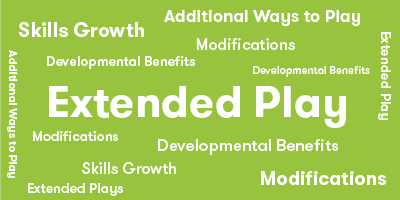
Extra Ways to Play the Game
Inspired by the content of the game, your family creates a list of chores, acts of kindness, etc., and assigns a value to each ("Do List"). Make a separate list of activities to do together that are fun and how much they should "cost" ("Activity List"). For each Do List item that is completed, deposit money in a "bank". At the end of the week total up the earnings. Let children spend their money for fun Activities.
Materials Needed
Paper, pencil, magnet to hold paper to refrigerator.
Developmental Benefits
This family activity builds social skills, empathy and a sense of self worth. In addition, children will practice addition and subtraction. Discussion of value and costs also builds logical thinking skills along with communication and negotiation strategies.
Extra Ways to Play the Game
Use the cards from the stores in the game. Have each person in the family pick what he or she would choose to buy from the store, but keep it secret. The other members of the family then predict what they chose and why they think the person would want to buy the item. The person then reveals what he chose and why. Discuss the answers.
Materials Needed
No additional materials are needed.
Developmental Benefits
This variation builds family communication and social comprehension. Children learn that people have different values and interests than they do. Children also need to justify or explain their selections to others.
Extra Ways to Play the Game
Twenty questions. Each person picks a card without letting other see what it is. The others ask questions to guess what card is held.
Materials Needed
No additional materials are needed.
Developmental Benefits
This game requires communication and cognitive skills. Children have to understand how to ask different types of questions (size, function, etc.). Cognitively, they need to be able to classify responses and think of another question to narrow down the correct answer.
*Data compiled from CCSSI ELA Standards, WA Science Standards, and Washington Social Studies Standards
- Choosing a selection results in a full page refresh.
- Opens in a new window.












